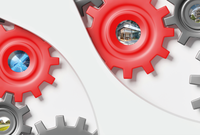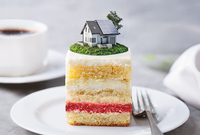Affordable & Liveable Property Guide 2nd Half 2019 - Brisbane
A key finding of this report is that the majority (5 out of 6) of the affordable and liveable suburbs are on the north side of the Brisbane River. These suburbs have the best possible median price growth while also satisfying other criteria such as: low vacancy rates, high yields, large infrastructure spending, low crime and proximity to amenities. In the previous 1st Half 2019¥ report, suburbs were spread throughout Brisbane, which suggests that there are now limited options.

Affordable Suburbs
A key finding of this report is that the majority (5 out of 6) of the affordable and liveable suburbs are on the north side of the Brisbane River. These suburbs have the best possible median price growth while also satisfying other criteria such as: low vacancy rates, high yields, large infrastructure spending, low crime and proximity to amenities. In the previous 1st Half 2019¥ report, suburbs were spread throughout Brisbane, which suggests that there are now limited options.
From 2018 to 20191 the number of houses sold in the Brisbane City Local Government Area (LGA) dropped by -35.7%. During this time, the median house price slightly softened by -1.5% (to $670,000). Brisbane LGA’s unit market experienced a price drop of -3.7%, with a median of $440,000 in 20191.
Brisbane has become more affordable with reduced competition in the market. Table 1 highlights top suburbs in the Brisbane City LGA, based on price growth and total estimated value of projects commencing in 2nd Half 20192.

Queensland’s (QLD) home loan affordability3 has remained relatively stable, with the proportion of income to meet home loan repayments increasing by only 0.4% in the 12 months to Q2 2019. However, first home buyer loan activity decreased by -17.8% over the same period, which suggests that first home buyer confidence is still quite low. New Federal Government incentives and the latest Reserve Bank of Australia’s cash rate cuts should lift first home buyer confidence for the rest of 2019 and into 2020.

In the 2nd half of 2019, the Brisbane property market continues to be a prime market for first home buyers, with the under $500,000 price bracket reaching a record high percentage of available suburbs (44.0%). This is a significant increase compared with 2nd Half 2018µ report, as buyers with a budget of $500,000 or less can only access 12.4% of the market.
Furthermore, there has been an increase in buyer activity within the higher price segment of $800,000+, which suggests that there is also an increased appetite for mid to higher end products. Brisbane’s price range spread is beneficial for many. First home buyers now have a better chance of entering the market, and homeowners can sell with confidence.
Affordable house suburbs (those with a maximum property sale price of the QLD state average home loan3, plus 81% premium, as per the 1st Half 2019¥ report), exist. These are: Nudgee, Doolandella, Everton Park, Calamvale, Wellington Point and Upper Kedron.
Interestingly, these suburbs still meet liveability criteria. Further, the premium needed to be added to the QLD average state loan in this report is 75% lower than the 81% required in the . These suburbs have a median house price below the Brisbane Metro median house price, however fulfil liveability criteria. This is good news for those wanting to enter the market.
Considering all methodology criteria (property trends, investment, affordability, development, and liveability), Tables 3 and 4 identify key suburbs which property watchers should be on the lookout for.
Affordable & Liveable Suburbs


In
the 12 months to Q2 2019, rental prices4 increased by +1.3% for houses
and +2.7% for units. Vacancy rates continue to decrease in correlation with the
increase in rental demand, due to affordability and employment opportunities.
Vacancy rates were 2.5% in June 2019, which is well below the Real Estate
Institute of Australia’s healthy benchmark of 3.0%. This further confirms that Brisbane
is heading towards a healthier rental market, as property stock is being
absorbed. Brisbane Metro’s rental yields were 3.8% (houses) and 5.3% (units), which
is well above Sydney Metro (houses 2.9% and units 3.8%) and Melbourne Metro
(houses 3.0% and units 3.8%).
During the 2nd half of 2019, Brisbane is set to invest approximately $8.4B2 in development, with infrastructure spending accounting for the highest expenditure ($3.4B, 38.7%). This is followed by commercial projects ($1.9B, 23.0%) and residential projects ($1.9B, 22.1%). Herston Quarter Health Precinct ($1.1B) and the Queens Wharf Redevelopment ($1.5B) will be the main drivers of economic growth in Brisbane, as these projects create large employment opportunities both during and after construction. A key residential project is the River Reach Apartments ($120.0M), which will add 576 units.
Methodology
This
report analyses all suburbs in the Greater Brisbane area, within a 20km radius
of the Brisbane CBD. The following criteria were considered:
- Property trends – all suburbs have a minimum of 20 transactions for statistical reliability purposes. Based on market conditions, suburbs have either positive, or as close as possible to neutral price growth, between 2018 to 20191.
- Investment – as of June 2019, all suburbs considered will have an on-par or higher rental yield than Brisbane Metro, and an on-par or lower vacancy rate.
- Affordability – identified suburbs have a median price below a set threshold. This was determined by adding percentage premiums to the QLD average home loan, which was $355,6403 as at the June quarter 2019. Premiums of 75% for houses and 44% for units were added, which for houses was below the required to reach Brisbane Metro’s median prices (89% premium) but is above the 24% premium needed to purchase a unit in Brisbane Metro. This places the house suburbs identified in the report to be below Brisbane’s median prices, meaning they are more affordable for buyers.
- Development criteria – all suburbs identified within this report have a high total estimated value of future development for the 2nd half of 20192, as well as a higher proportion of commercial and infrastructure projects. This ensures suburbs chosen show signs of sustainable economic growth, which in turn has a positive effect on the property market.
- Liveability criteria – this included ensuring all suburbs assessed have low crime rates, availability of amenities within a 5km radius (i.e. schools, green spaces, public transport, shopping centres and health care facilities), and an unemployment rate on-par or lower in comparison to the state average (as determined by the Department of Jobs and Small Business, March Quarter 2019 release).

PRD Affordable and Liveable Property Guide 2H 2019 - Brisbane





